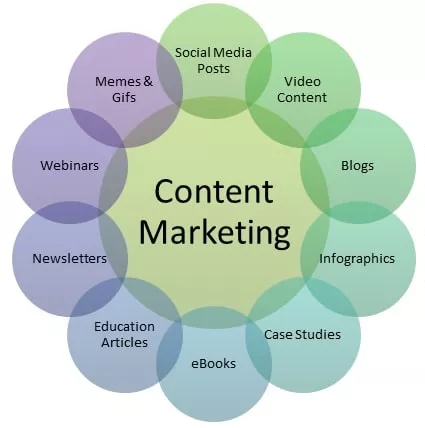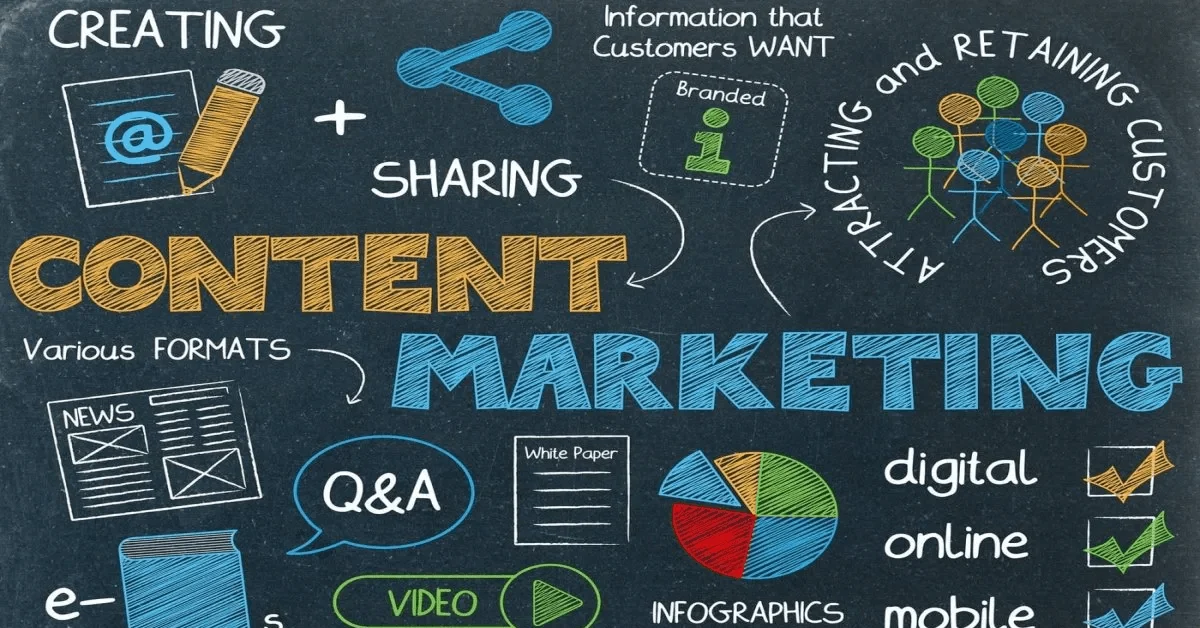Last updated on May 29, 2025
In today’s world attention spans are shrinking widely and competition is growing rapidly, hence content marketing becomes a powerful strategy for businesses of all sizes. It’s more than just writing blogs — it’s about delivering value, building trust, and guiding potential customers through their journey.
In this blog, we will break down content marketing into clear, actionable insights that will help every creator and businessman to grow your brand, audience, and revenue.
CONTENT MARKETING: AN INTRODUCTION
Content marketing is an approach in which user are provided with the content that is more relevant, consistent and gives unique value to them, in order to attract and retain a clearly defined audience so that profitable customer action can be derived from them. Content marketing is a modern approach that educate, entertain and inspire the customers to build confidence over time span.
Search engines like Google prefers fresh, raw and valuable content. Blog posts and optimized pages help in increasing your visibility on search engines. When you consistently update helpful content, people builds brand trust and authority. Content like eBooks, webinars, and case studies also turn visitors into customers. Additionally, Compared with the traditional way of marketing, content marketing is cost-effective for even small business owner.
TYPES OF CONTENT FOR CONTENT MARKETING

BLOG POSTS
Blog posts are modern method and unique way to do marketing. Blog posts is a part of SEO. With the help of this marketing strategy organic traffic is gathered. Blog posts includes listicles, guides, trending topics.
SOCIAL MEDIA CONTENT
Content that we see on social platforms like Instagram, facebook, Linkedin is a type of social media content like Quick reels, short form videos, visuals and so on. Social media content helps in creating brand awareness and engage audience.
VIDEOS
Video content like tutorials, testimonials, product demonstration, behind the scene shoot highly engage and develop curiosity amongst the customers. These are the versatile form of creating engagement with the customers.
INFOGRAPHICS
Infographics provide visual representation of data, process diagram and fact sheets. These are very useful for developing quick understanding and sharing the data.
EBOOKS AND WHITEPAPERS
These are the long form content that capture leads often by sign-up data form. Ebooks and whitepapers are the ultimate guide to X platform.
EMAILS AND NEWSLETTERS
With the help of emails and newsletters audience are nurture over the period of time. These builds loyalty and engagement directly connecting with the audience.
CORE ELEMENTS OF CONTENT MARKETING STRATEGY
Define Your Goals
Having a clarity over the goal of content marketing is an essential and foremost step to take. Whether the purpose of content marketing is to create brand awareness or to generate leads or to be visible on search engines or to retain the customers. Identifying the objective is the primary key of every planning. So that further strategies are made around that particular goal. For this use SMART goal(Specific, Measurable, Achievable, Relevant, Time-bound) analysis.
Know Your Audience (Buyer Persona)
The next step is to create buyer persona. Knowing the characteristics of the audience is also an important step. Hence, make a list of the characteristics of the audience like demographics, pain points, behavior and so on. So that content that resonates with the audience can be created.
Content Planning and Calendar
Plan type of content to create, when to publish it, and on which platform. Use tools like Notion, Trello, or Google Sheets for making calendar for content planning.
Keyword Research and SEO
Use tools like Google Keyword Planner, Ubersuggest, or SEMrush for keyword research and also optimize headlines, meta descriptions, and content body.
Content Distribution Channels
Use multiple distributive channels like blogs, websites, email, social media, youtube, podcasts and so on to publish the content. Also use social media, email marketing, and even paid ads to distribute your content.
Measure & Analyze Performance
Lastly, measure performance with the help of tools like Google Analytics, Search Console, or social media insights. Evaluate the engagement, conversions, and traffic sources and take measurable actions to improve the performance.

CONTENT CREATION TIPS
- Firstly focus on the quality of the content over the quantity. Posting daily 2-3 post is not necessary instead just focus on delivering real value with single post.
- Story telling with visuals is the oldest form to engage the audience and establish connections. As storytelling connects emotionally with the audience and make brand memorable.
- Create valuable, raw, and deep content. As these performs better even in the long run.
- Images, charts, and videos increases retention rate. Consequently, text should be break with relevant images, infographics, or short videos.
- Brand voice should be maintained.
- Ensure uniformity of information across all platforms to build trust and visibility.
COMMON MISTAKES TO AVOID
Sometimes in making of the content people forget about the target audience pain points and aspirations. This is the one of the common mistake that people undergo while preparing content marketing strategy. As irrelevant content leads zero engagement.
Without keyword, content do not get the visibility. SEO basics also be kept in mind while creating a content.
Consistent posting schedule is also a key relevant factor in order to engage the audience. As this makes audience curious about the content.
Always gives a clear Call-to-actions(CTAs) and guide the audience on what to do next such as subscribe, buy, contact and so on.
If you’re not measuring, you’re guessing. This is incompetent. Hence, without analytics one can not improve return on investment. Therefore, keep tracking your results.
TOOLS TO SIMPLIFY CONTENT MARKETING
Here are some tools that simplify your content marketing planning and execution.
Content Planning Tools : Trello, Notion, or Google sheets for planning and scheduling.
SEO Tools: Ahrefs, SEMrush, Ubersuggest, Google Search Console.
Graphic Design Tools: Canva, Adobe Express for creating visuals.
Writing and Editing Tools: Grammarly, Hemingway Editor for polishing content.
CONCLUSION
Content marketing is not about being everywhere — it’s about being valuable. Whether you are a freelancer, startup, or small business, starting with a simple, clear strategy and consistently delivering helpful content can take your brand to the next level.
Start creating. Start connecting. Start converting.

